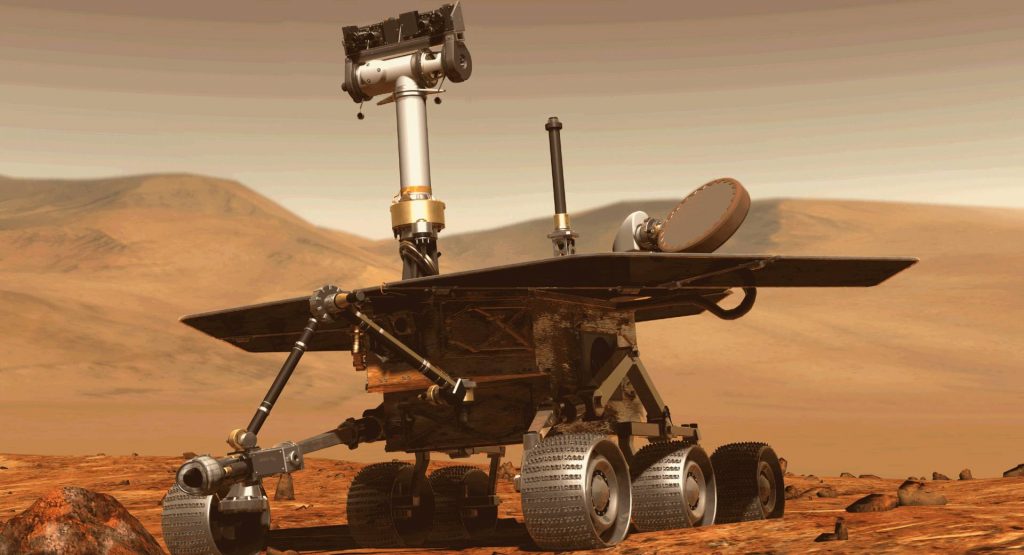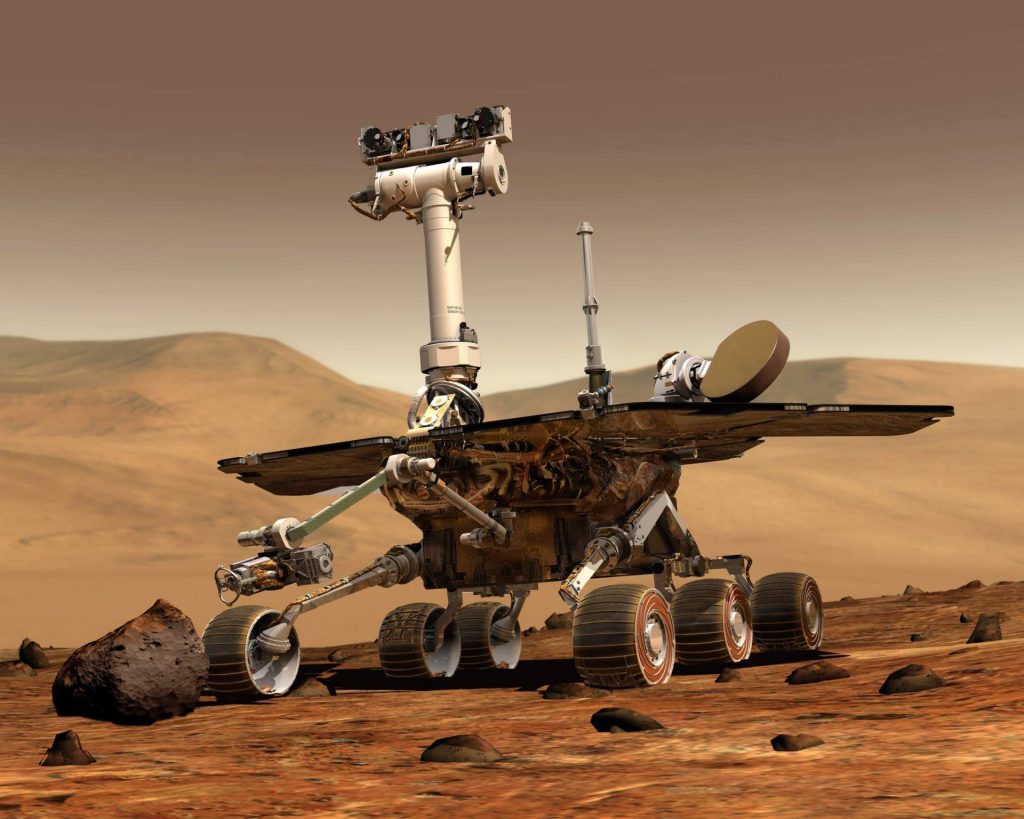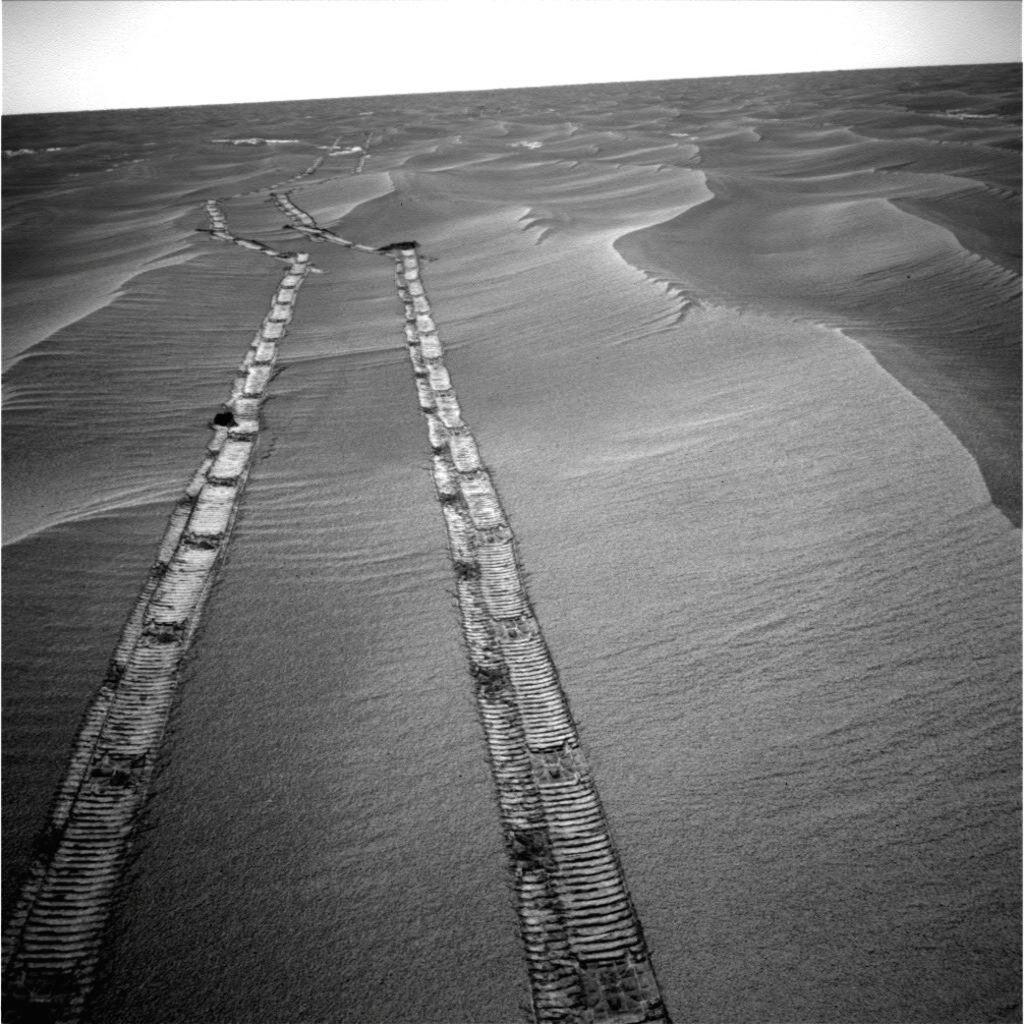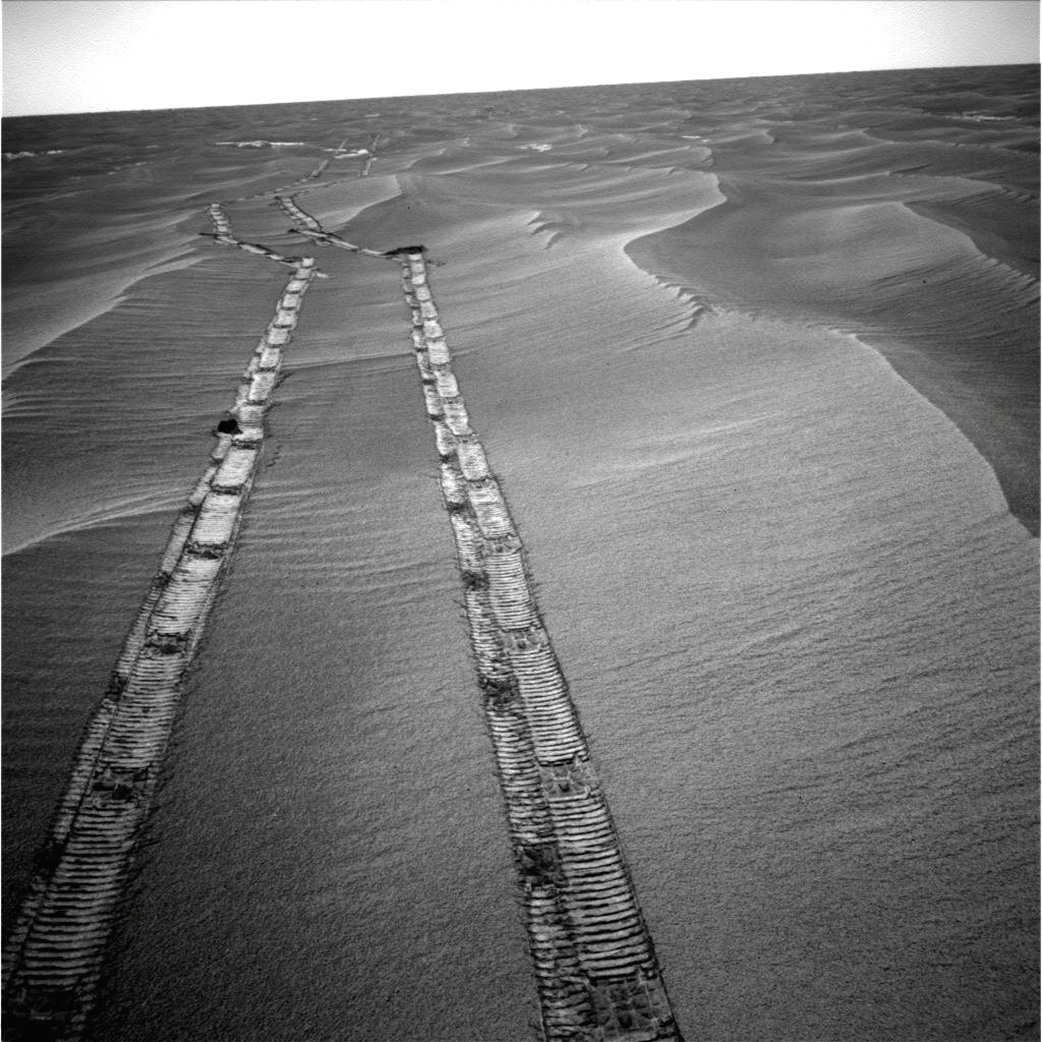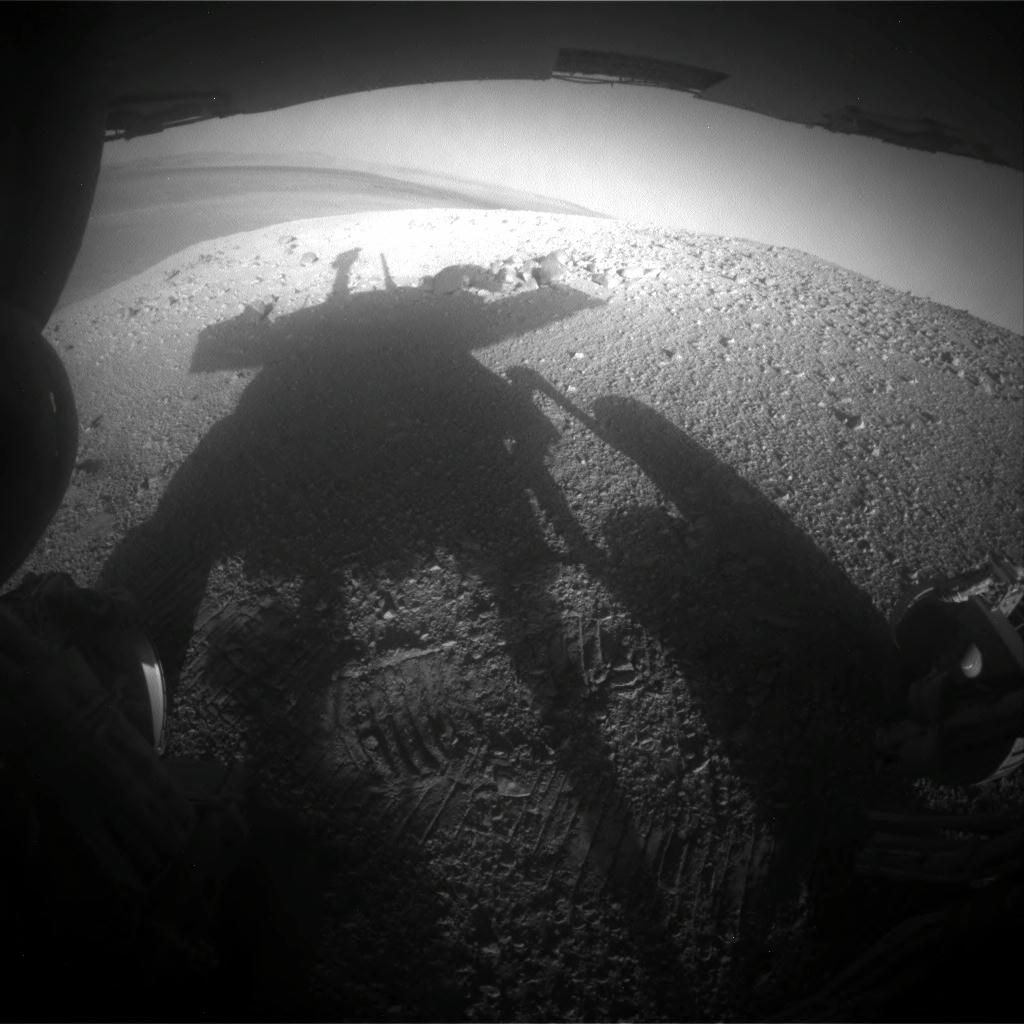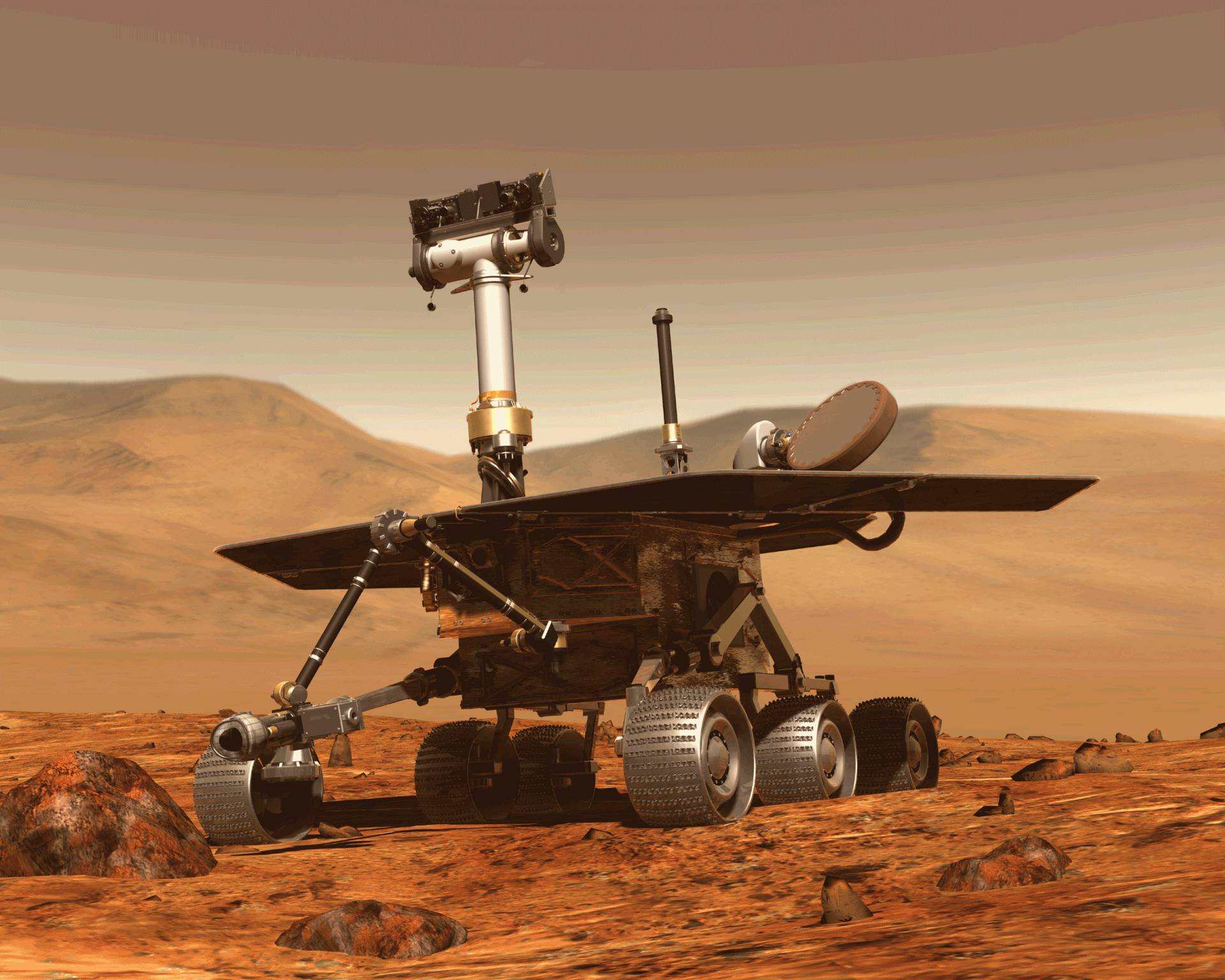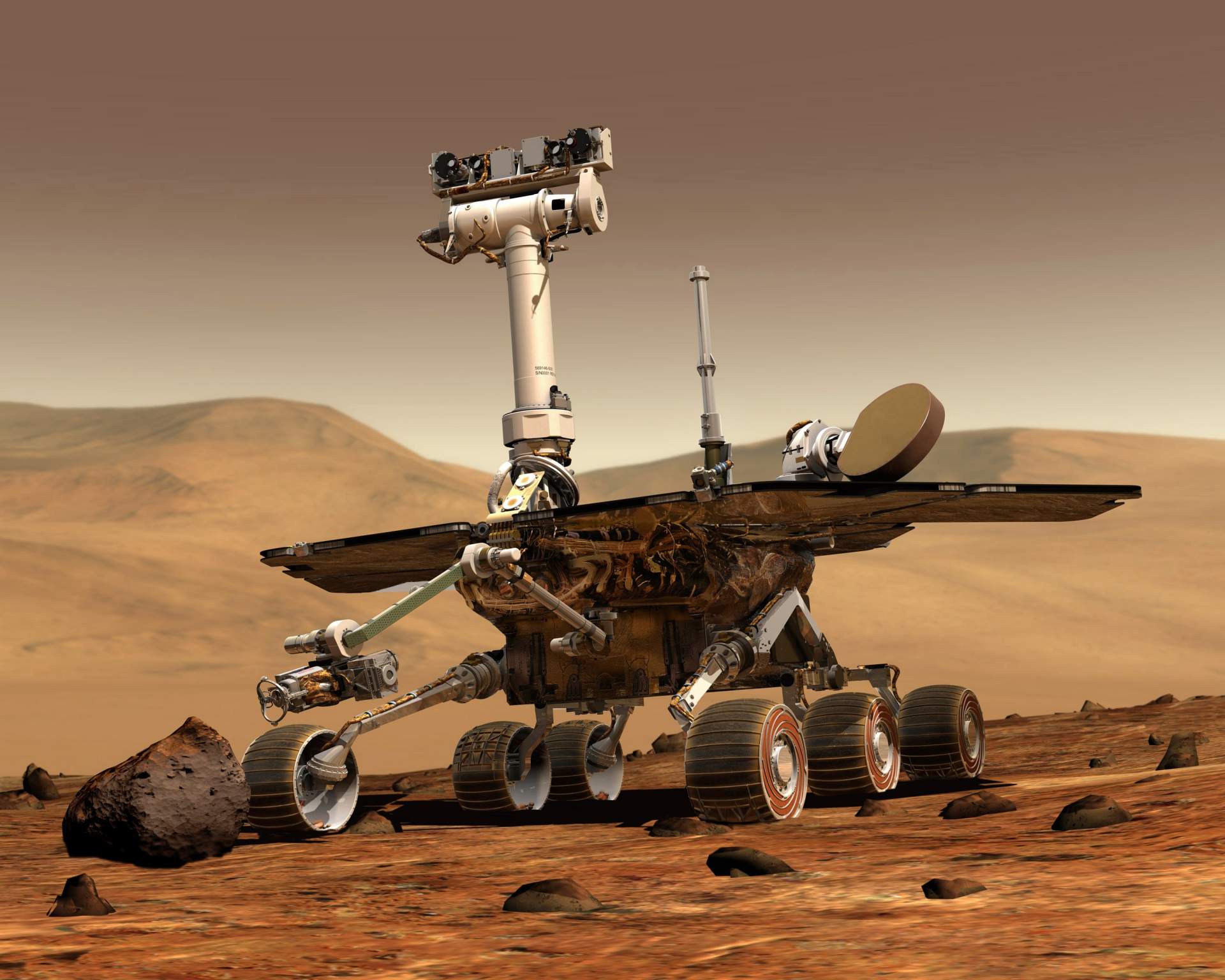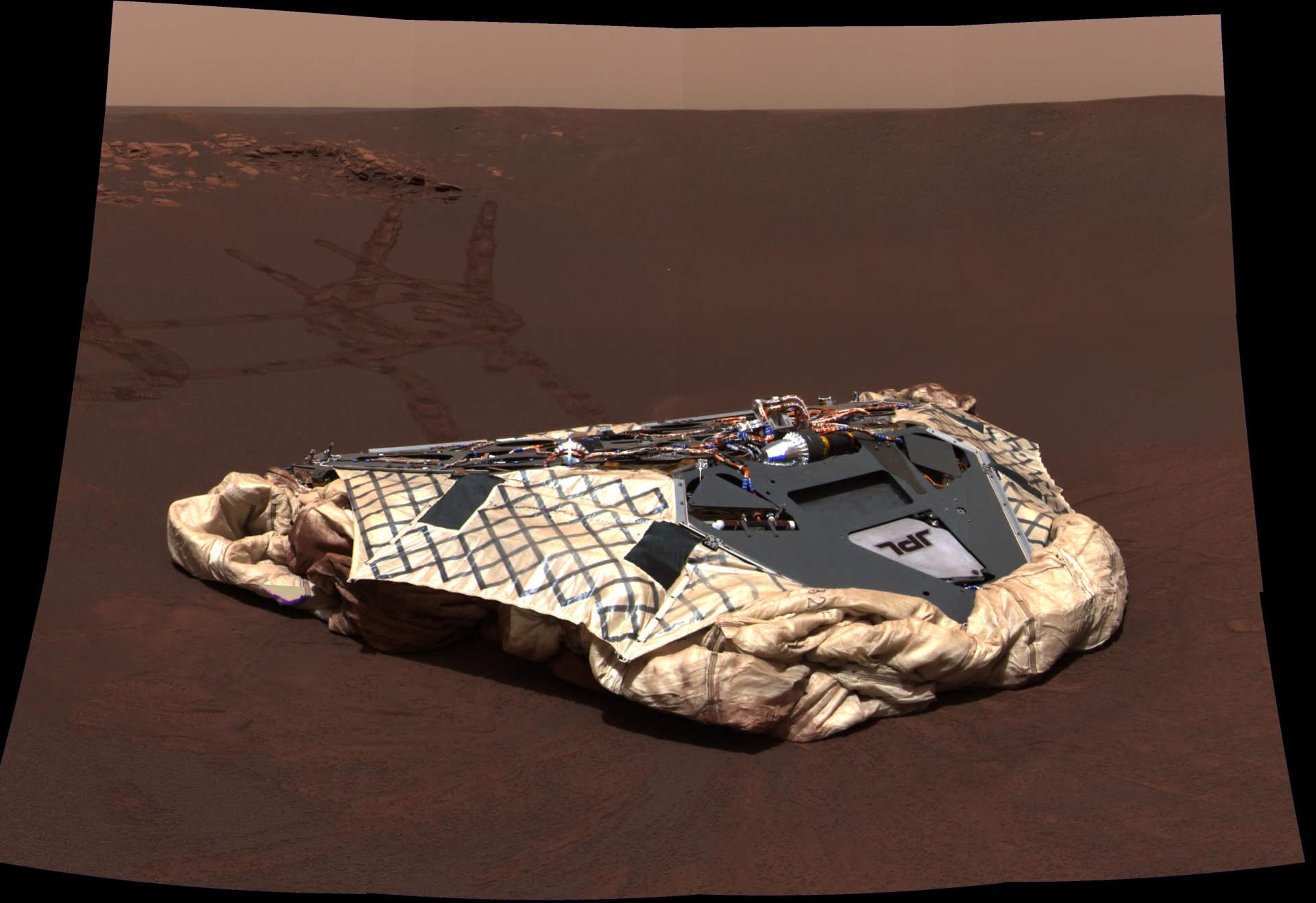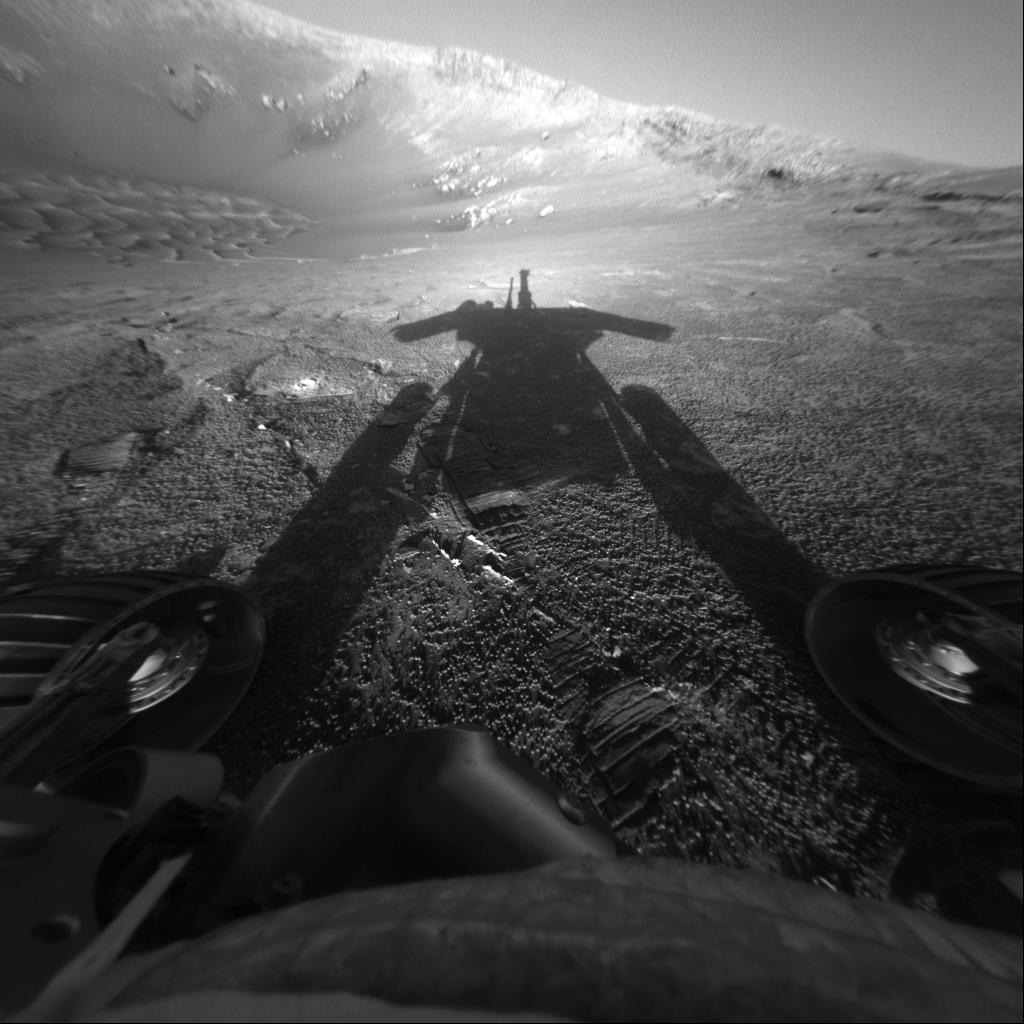It was supposed to last only 90 days in Mars’ hostile environment, but NASA’s Opportunity rover defied all odds and remained functional for almost 15 years.
Now, the space agency has declared mission complete for its Mars-exploring vehicle, as NASA’s scientists haven’t been able to communicate with Opportunity since June 10, 2018, when a planet-wide dust storm blanketed the robot’s location. NASA has done all it could to re-establish contact with the rover, sending more than a thousand commands since last summer.
On Tuesday, engineers in the Space Flight Operations Facility at NASA’s Jet Propulsion Laboratory (JPL) made a final unsuccessful attempt to get in touch.
This forced the space agency to declare the Opportunity’s mission complete after the golf cart-sized robot explored the surface of Mars for an incredible 15 years. NASA engineers determined that the likelihood of receiving a signal was far too low to continue recovery efforts.
Designed to last just 90 Martian days (one day on Mars equates to one day and 37 minutes on Earth) and travel a mere 1,100 yards (1,000 meters), Opportunity vastly surpassed all expectations as far as endurance, scientific value and longevity are concerned. Not only did it hugely exceed its life expectancy, but also traveled more than 28 miles (45 kilometers) by the time it reached its final resting spot on Mars that’s, quite fittingly, named Perseverance Valley.
“It is because of trailblazing missions such as Opportunity that there will come a day when our brave astronauts walk on the surface of Mars,” said NASA Administrator Jim Bridenstine. “And when that day arrives, some portion of that first footprint will be owned by the men and women of Opportunity, and a little rover that defied the odds and did so much in the name of exploration.”
The Opportunity rover mission has been one of the most successful and enduring of its kind, helping lay the groundwork for NASA’s return to the Red Planet. The rover sent more than 217,000 images to Earth (including 15 360-degree color panoramas), exposed the surface of 52 rocks for analysis, found hematite (a mineral that forms in water), and discovered strong indications of the action of ancient water, similar to the drinkable water of a pond or lake on Earth, on Endeavour Crater.







